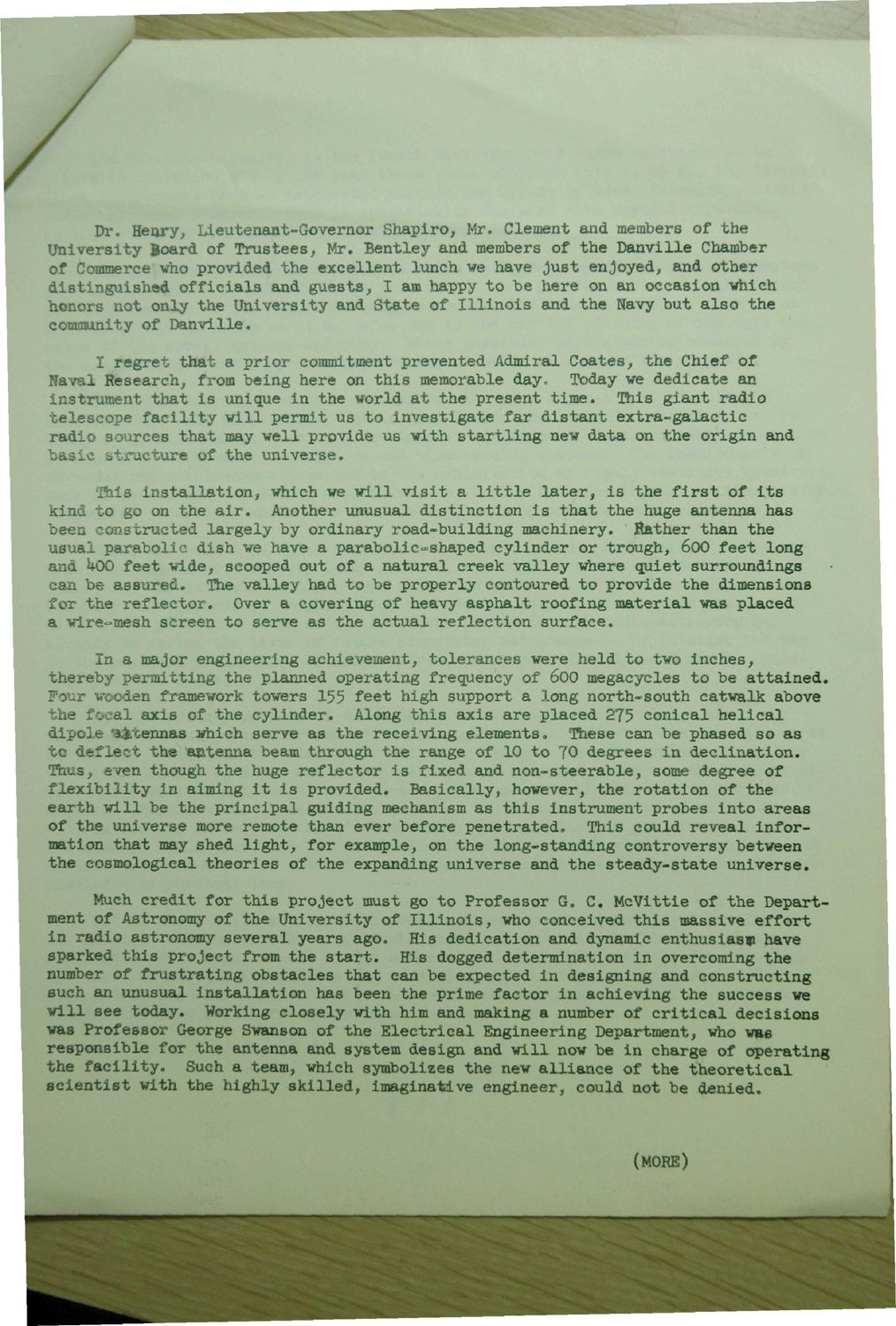| |
| |
Caption: Dedication - Radio Telescope Dedication Remarks
This is a reduced-resolution page image for fast online browsing.

EXTRACTED TEXT FROM PAGE:
Dr. Henry, Lieutenant-Governor Shapiro, Mr. Clement and members of the University Board of Trustees, Mr. Bentley and members of the Danville Chamber of Commerce who provided the excellent lunch we have Just enjoyed, and other distinguished officials and guests, I am happy to be here on an occasion which honors not only the University and State of Illinois and the Navy but also the community of Danville. I regret that a prior commitment prevented Admiral Coates, the Chief of Naval Research, from being here on this memorable day. Today we dedicate an instrument that is unique in the world at the present time. This giant radio telescope facility will permit us to investigate far distant extra-galactic radio sources that may well provide us with startling new data on the origin and basic structure of the universe. This installation, which we will visit a little later, is the first of its kind to go on the air. Another unusual distinction is that the huge antenna has been constructed largely by ordinary road-building machinery. Bather than the usual parabolic dish we have a parabolic-shaped cylinder or trough, 600 feet long and too feet wide, scooped out of a natural creek valley where quiet surroundings can be assured. 'The valley had to be properly contoured to provide the dimensions for the reflector. Over a covering of heavy asphalt roofing material was placed a wire~mesh screen to serve as the actual reflection surface. In a major engineering achievement, tolerances were held to two inches, thereby permitting the planned operating frequency of 600 megacycles to be attained. Four wooden framework towers 155 feet high support a long north-south catwalk above the focal axis of the cylinder. Along this axis are placed 275 conical helical dipole afetennas which serve as the receiving elements, Tfrese can be phased so as to deflect the antenna beam through the range of 10 to 70 degrees in declination. Thus, even though the huge reflector is fixed and non-steerable, some degree of flexibility in aiming it is provided. Basically, however, the rotation of the earth will be the principal guiding mechanism as this instrument probes into areas of the universe more remote than ever before penetrated. This could reveal information that Bay shed light, for example, on the long-standing controversy between the cosmological theories of the expanding universe and the steady-state universe. Much credit for this project must go to Professor G. C. McVittie of the Department of Astronomy of the University of Illinois, who conceived this massive effort in radio astronomy several years ago. His dedication and dynamic enthusiasm have sparked this project from the start. His dogged determination in overcoming the number of frustrating obstacles that can be expected in designing and constructing such an unusual installation has been the prime factor in achieving the success we will see today. Working closely with him and making a number of critical decisions was Professor George Swanson of the Electrical Engineering Department, who was responsible for the antenna and system design and will now be in charge of operating the facility. Such a team, which symbolizes the new alliance of the theoretical scientist with the highly skilled, imaginative engineer, could not be denied. (MORE)
| |